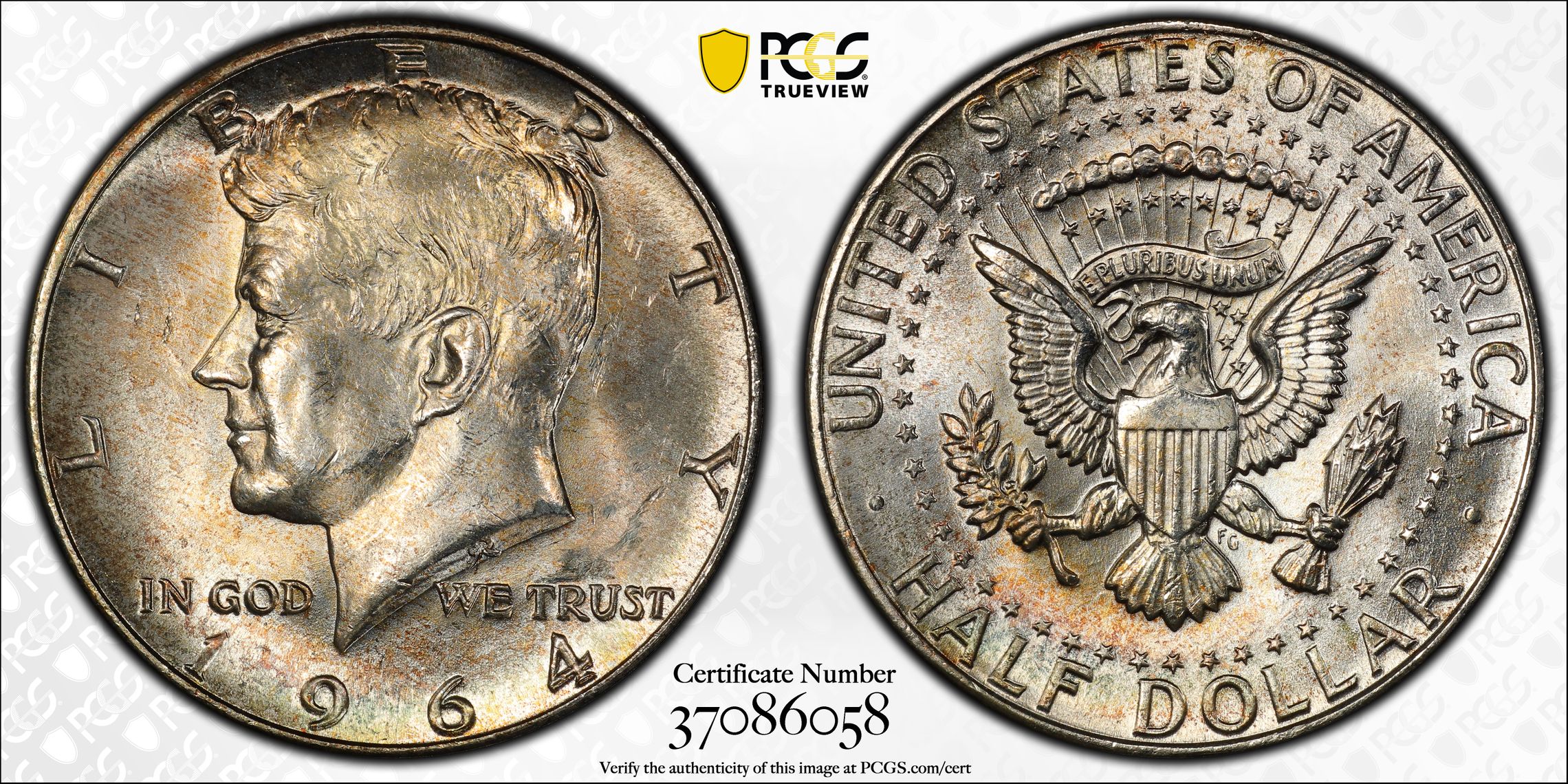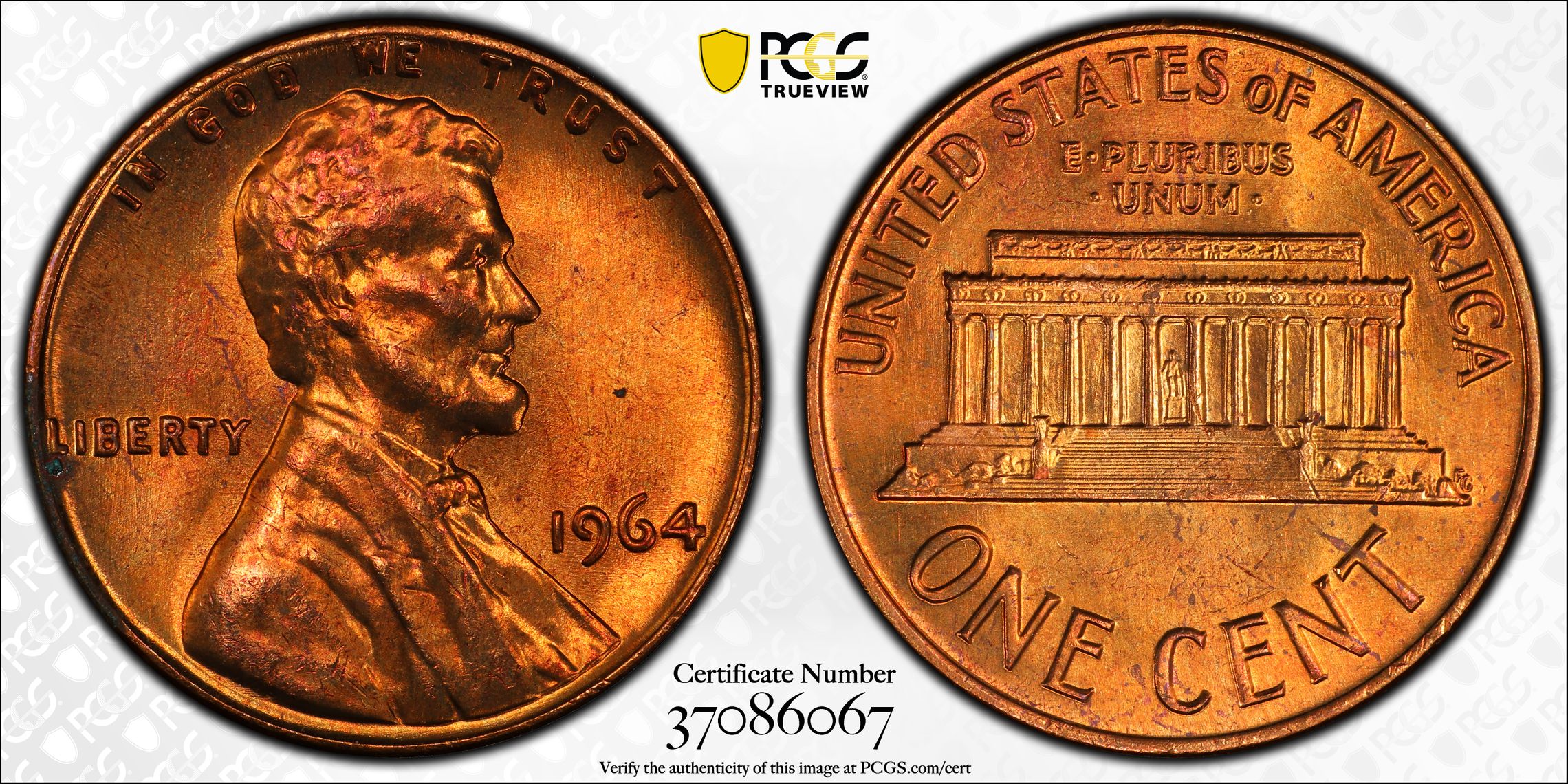"1964 SMS owners" Need advice with pedigree markers. PCGS may have been wrong
 levigarrett101
Posts: 62 ✭
levigarrett101
Posts: 62 ✭



I submitted a 1964 Half dollar and a 1964 1c with the same pedigree markers as the know 1964 SMS. They were not graded as SMS. Were business strikes used with the same die after the SMS were minted? If not how could they have the die markers and no be considered SMS. I wrote SMS on the description. Did i need to write Specimen? These are the markers which mine do have.
Half Dollar- Obverse
shows a small, teardrop-shaped tine of metal drooping from the underside of the 4.
Reverse-
Die polishing line running diagonally from bottom of middle serif of F in OF to A(MERICA).
SMS penny- obverse
Vertical Die polishing marks
reverse-
lathe lines in bay 3 and 4. Vertical tic Mark in bay 2.
I am just confused as to how coins could have the same markers but not be considered that coin. Unless the die was re used but i can not find any information about it. Any help is much appreciated. Attached are pictures.
My coins- PCGS cert #- half dollar 37086058
Penny 37086067












Comments
Coins don't have a "pedigree."
"Provenance" is the chain of ownership of a coin.
What the OP is referring to are die markers, or "pick up points" for specific varieties.
The bogus "1964 SMS" coins are simply very early strikes off new dies. Compare with the documented piece in the Smithsonian. They are part of the normal range of coins struck from production dies. Nothing more.
Another way to look at it is that unless you have one of the coins with provenance that ties it back to the Mint Director, then you don't have one of the MD's coins. And it is the high quality strikes owned by her that garner the so-called SMS label.
As I see it, the so-called SMS coins are "special" because they were owned by her, they were not owned by her because they were special. So, the chance of finding one in the wild is 0% because there is no provenance.
Just my opinion based on reading these types of threads.....
Look at the PCGS price guides for the 1964 sms coins of all denominations, penny - nickel -- dime -- quarter --
and half dollar. Apparently lotsa people at pcgs and collectors with money to burn on them think there are
“something special”. Apparently they are not as “bogus” as RB thinks!
a.k.a "The BUFFINATOR"
If you compare 1964 sms and 1965 sms coins then the similarities between them are obvious. Is RB saying that the 1965,
1966, and 1967 sms coins are in fact sms coins because he has located mint documentation for these emissions. And is he also saying that he, as well as others, have been unsuccessful in obtaining any documentation for the 1964 sms coins which
immediately makes them bogus, appearances aside?
I should also mention that I do not own any 1964 sms business strike coinage.
a.k.a "The BUFFINATOR"
I believe SMS coins are somewhat like Proofs in respect it is a way of manufacture. That is the reason why a Proof can't be MS and MS can't be a proof, both have planchets made a different way. There are MS coins from the Matte Proof era that were struck from retired proof dies. That doesn't make the MS coins a proof because the planchets for each were prepared and struck completely different. I believe it is the same for SMS planchets.
- Bob -

MPL's - Lincolns of Color
Central Valley Roosevelts
What "expert" individual will certify 1964 SMS coins in writing?
The discussions I find refer to the SMS coins being struck on different, higher-tonnage presses. IF that is the only difference, then there is no planchet difference and no specific die preparation difference.
So, to the OP's point, die characteristics COULD indicate SMS status if there was only one die used on the correct coin press. BUT, if the die were used on multiple presses before it broke, die characteristics alone might not be enough to make the designation.
To Roger's point, I think, there is no evidence of anyone applying the higher-tonnage presses to coins in 1964. So, other than possibly presentation pieces such as the ones he refers to, it would not be possible to have true SMS coins.
All comments reflect the opinion of the author, even when irrefutably accurate.
show some pics of the whole coin
64 sms have a distinct look, unlike any regular issue coins from that year
Ike Specialist
Finest Toned Ike I've Ever Seen, been looking since 1986
I am unfamiliar with the Smithsonian piece. Where is it documented?
Sorry, you get what you get. You can't dictate who posts replies.
My opinion is PCGS did NOT 'get it wrong'
He doesn't want opinions. He wants facts!
All comments reflect the opinion of the author, even when irrefutably accurate.
He can't handle the Facts !
(to borrow a phrase)
I know that's what he asked for in a
prior post - and why I started my
reply as 'My opinion' - 'cause I figured
he wouldn't care for anyone's 'opinion'
the fact is, Pcgs is right
Ike Specialist
Finest Toned Ike I've Ever Seen, been looking since 1986
You paid for trueviews, at least use them.


Collector, occasional seller
As far as using SMS dies for circulation strikes, I am not sure but I would assume so. We can probably confirm this by studying 65-67 SMS and circulation coins.
Collector, occasional seller
65-67 sMS coins look completely different than 64's
Ike Specialist
Finest Toned Ike I've Ever Seen, been looking since 1986
neither of the coins in question have the sms look
Ike Specialist
Finest Toned Ike I've Ever Seen, been looking since 1986
Welcome to the forum @levigarrett101
Those are nice close-up pics.
Successful transactions with : MICHAELDIXON, Manorcourtman, Bochiman, bolivarshagnasty, AUandAG, onlyroosies, chumley, Weiss, jdimmick, BAJJERFAN, gene1978, TJM965, Smittys, GRANDAM, JTHawaii, mainejoe, softparade, derryb, Ricko
Bad transactions with : nobody to date
The gullible are gullible .... that's about all that can be said.
The real culprits are those who claim to attribute/authenticate, charge hefty fees, yet fail to perform the most basic research and investigation before making a declaration. Consider MCMVII "proofs" (they don't exist - never have); "branch mint proofs" that are just nice PL; "proof" early US that have been discredited as nice PL (or not even PL) coins; call a coin a certain alloy when it is entirely different or even merely gold/silver plated, etc. Plus failures to test physical characteristics of unusual coins, which leaves others trying to figure out how and why a certain attribution was made.
Coins - die struck metal pieces - result from a complex series of chemical, metallurgical, mechanical, physical and engineering processes. To prepare an assessment of the authenticity and correctly attribute an unusual coin requires collecting a complete set of physical and metallurgical data, along with descriptions of surface appearance and similar characteristics. These data must be compared to the best information we have about contemporary chemical, metallurgical, production and handling practices. Areas of discrepancy, MUST be investigated carefully and objectively. Everything must be performed without prejudice or pre-judgement.
I'm not seeing the teardrop falling from the 4 as I do in the PCGS certified SMS Kennedy. There is also a world of difference in the letters, devices and especially the rims.
- Bob -

MPL's - Lincolns of Color
Central Valley Roosevelts
the 1965-1967 SMS issues are very similar in appearance to a typical Modern Proof issue, mirror-like fields with frosted devices/lettering.
the 1964 SMS issues had a different type of die preparation which left very noticeable polishing lines in the fields, they are clearly visible in pictures and to the naked eye. other members, especially Georgio(I think), are quite familair with them since he collected them. a PM to him might be helpful.
to the point of the same diagnostics appearing on some Mint State issues, it is entirely possible that after striking what was almost certainly under 25 of these coins that the Mint then reworked the dies and placed them into regular production. this is speculation on my part and there are really no good records to document anything. these came from a secretive time at the Mint when they wanted to thwart collectors from hoarding and they did a good job.